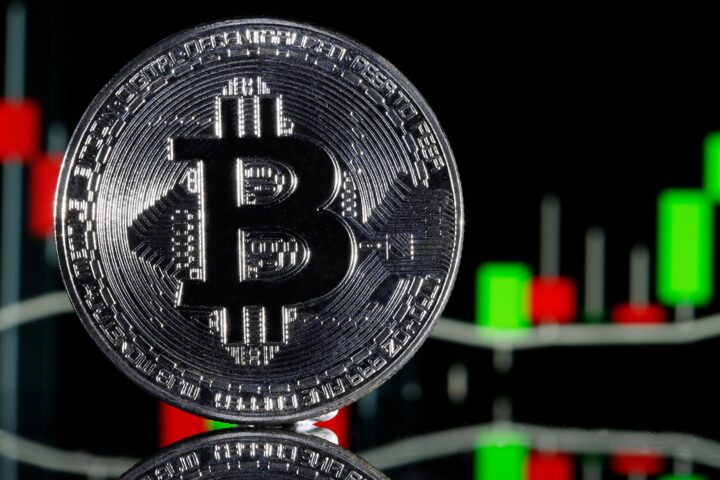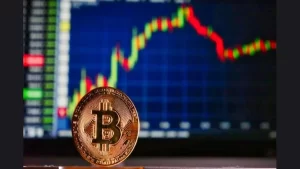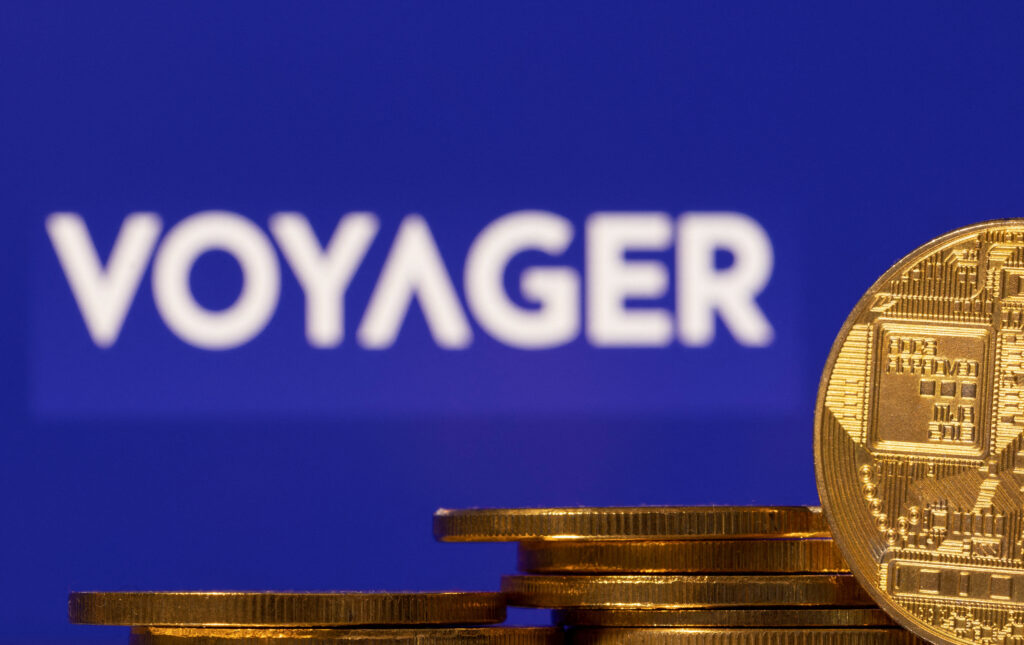According to a report by JPMorgan managing director Nikolaos Panigirtzoglou, the approval of a spot Bitcoin exchange-traded fund (ETF) in the United States may not have a significant impact on crypto markets, but it could benefit the leading cryptocurrency.
Panigirtzoglou, based in London, is part of JPMorgan’s global market strategy team and believes that a Bitcoin ETF in the US would have a similar effect as those seen in Canada and Europe, where such ETFs have been available for some time.
The report reveals that Bitcoin ETFs have generally attracted little investor interest in other jurisdictions over the past two years.
They have also failed to benefit from investor outflows from gold ETFs.
READ MORE: Top Executives Depart Binance Amidst Legal Scrutiny and Compliance Concerns
Despite this, Panigirtzoglou sees potential benefits if a Bitcoin ETF is approved in the US.
He suggests that it could bring more liquidity to Bitcoin markets and possibly lead to a shift in trading activity from BTC futures products.
Panigirtzoglou’s perspective differs from the high expectations surrounding the approval of a Bitcoin ETF in the United States. BlackRock’s CEO, Larry Fink, expressed during an interview on July 6 that investors might turn to Bitcoin as a hedge against inflation and the devaluation of fiat currencies.
Fink emphasized that Bitcoin is an international asset, not tied to any specific currency, making it an alternative asset for people to consider.
The annual inflation rate for the US, as reported by the Labor Department, was 4.0% for the 12 months ending in May.
The success of BlackRock in filling ETFs has generated optimism that their attempt to launch a Bitcoin ETF might also succeed.
Data from Bloomberg Intelligence’s Eric Balchunas and James Seyffart indicates that only one out of the 550 funds filed by BlackRock has been rejected to date.
Following BlackRock’s application, other companies such as Invesco, Fidelity, WisdomTree, and ARK Invest have also submitted applications or refilings with the Securities and Exchange Commission (SEC).
However, it’s worth noting that the SEC has previously denied several applications for Bitcoin ETFs.
In conclusion, while the approval of a Bitcoin ETF in the US may not be a game changer for crypto markets, it could have some positive implications for the leading cryptocurrency, such as increased liquidity and potential shifts in trading activity.
However, the overall impact might not be as significant as some anticipate, considering the historical investor interest in Bitcoin ETFs in other jurisdictions.
Cryptocurrency exchange Binance has entered into an agreement with Coinmerce to facilitate the transition of its users as it winds down its operations in the Netherlands.
Coinmerce, a Dutch crypto exchange, announced the collaboration in a blog post on July 6.
The partnership will enable hundreds of thousands of Binance users in the Netherlands to transfer their digital assets to Coinmerce’s platform at no cost.
READ MORE: Larry Fink Advocates for Crypto, Fuels Hopes for Bitcoin ETF Amid Regulatory Uncertainty
Binance had previously revealed plans to significantly reduce its services for Dutch users starting from July 17 due to its failure to acquire a virtual asset service provider license in the country.
Coinmerce co-founder Nick Smits van Oyen stated that their platform is fully compliant with European laws and regulations and offers Binance users an equivalent alternative.
He assured a smooth transition process, emphasizing that they had worked closely with Binance to make the switch as effortless as possible for the users.
The trouble for Binance in the Netherlands began in April 2022 when the country’s central bank imposed a fine of approximately $3.3 million on Binance Holdings for operating crypto services without the necessary registration.
At that time, the central bank highlighted the exchange’s large customer base in the Netherlands.
While Binance has been expanding its operations into various countries, it has encountered regulatory challenges in certain jurisdictions.
In the United States, the exchange has faced legal action from both the Securities and Exchange Commission (SEC) and the Commodity Futures Trading Commission (CFTC).
Furthermore, reports suggest that Binance’s French division is currently under investigation.
Despite these regulatory hurdles, Binance continues to explore opportunities for growth in other regions, such as Kazakhstan.
The exchange remains a prominent player in the global cryptocurrency market, but it faces increasing scrutiny from regulators, who are aiming to establish clear frameworks for the operation of digital asset platforms.
As Binance collaborates with Coinmerce to assist its Dutch users with the transition, it remains to be seen how the exchange will navigate the regulatory landscape in different countries moving forward.
Cryptocurrency exchange Gemini, based in the United States, has taken legal action against Digital Currency Group (DCG) and its CEO, Barry Silbert, accusing them of “fraud against creditors.”
In a filing made on July 7 in a New York court, Gemini claimed that DCG and Silbert were involved in a scheme where they lent large amounts of cryptocurrency and U.S. dollars to Genesis, a subsidiary of DCG.
Gemini seeks to recover funds it incurred due to alleged false representations and omissions by DCG and Silbert, as well as their alleged role in facilitating Genesis’s fraud against Gemini.
READ MORE: Vitalik Buterin Fires Warning About Bitcoin’s Future
The exchange also intends to pursue legal avenues in Genesis’s bankruptcy case.
Genesis had been responsible for operating an Earn program in partnership with Gemini, allowing users to loan crypto with the promise of repayment and interest.
However, the program suspended withdrawals in November 2022, citing market turmoil, and subsequently filed for Chapter 11 bankruptcy.
Gemini co-founder Cameron Winklevoss, in a Twitter thread on July 7, claimed that Silbert was aware of Genesis’s insolvency when attempting to continue the Earn program.
The complaint further alleged false financial reporting by DCG and Silbert, starting with the collapse of Three Arrows Capital in June 2022, which resulted in a significant deficit in Genesis’s balance sheet.
Winklevoss asserted that Genesis and DCG owed $900 million to Gemini’s clients.
Winklevoss accused Silbert and other DCG executives of conspiring to create false financial reports to deceive Gemini and creditors, stating, “This fraud goes to the very top.”
Winklevoss had previously threatened to sue DCG and Silbert over delays in resolving the issues between Gemini and Genesis.
In response to the lawsuit, DCG called the legal action a “publicity stunt” by Winklevoss and dismissed claims of wrongdoing as “baseless, defamatory, and completely false.”
Both Genesis and Gemini have faced regulatory scrutiny following the fallout of the Earn program.
The U.S. Securities and Exchange Commission filed a lawsuit against the two firms in January, alleging the offering of unregistered securities.
Additionally, the New York Department of Financial Services reportedly initiated an investigation into Gemini regarding claims related to its Earn program.
BarnBridge DAO, a decentralized autonomous organization, has instructed its members to halt all activities associated with the project following reports of an investigation by the United States Securities and Exchange Commission (SEC).
Douglas Park, a lawyer representing the organization, conveyed this information to the members through a post on the platform’s Discord channel on July 6.
To mitigate potential legal liabilities, Park recommended the suspension of all work related to BarnBridge, including the closure of liquidity pools.
READ MORE: Crypto Exchange Launches Public Testnet for v4, Paving the Way for Full Decentralization
Additionally, individuals were advised not to receive compensation for their involvement in the DAO’s investment endeavors.
Co-founder Tyler Ward, known as “Lord Tyler” on Discord, subsequently confirmed the authenticity of Park’s message on BarnBridge’s Discord platform.
The reason behind the SEC’s probe into BarnBridge DAO was not explicitly stated by Park or Ward.
Park clarified that due to the investigation being ongoing and non-public, only limited details could be shared with the members.
Notably, prior to the SEC investigation, a proposal was put forth to retain the law firm Park & Dibadj, managed by Park himself, as the legal counsel for the DAO.
The proposal was voted on by BarnBridge tokenholders, with an overwhelming majority (94.3%) in favor.
However, some members have expressed skepticism regarding the SEC’s investigation, speculating that the founders may be leveraging it as an excuse for an exit strategy to potentially defraud investors.
Ward refuted these claims, emphasizing the implausibility of such an attempt.
Responses from BarnBridge DAO members on Discord varied, with some jokingly suggesting moving to Europe to evade the SEC’s jurisdiction, while others expressed concerns about the investigation’s impact on their involvement with BarnBridge.
BarnBridge is a decentralized finance protocol aimed at managing risks associated with inflation and interest rate volatility across multiple platforms.
Since news of the SEC investigation broke, the price of BarnBridge’s native token, BOND, has experienced a 1.9% decline, trading at $3.12 according to CoinGecko.
The token’s value has dropped significantly (98.3%) from its all-time high of $185.7 on October 27, 2020, resulting in a current market capitalization of $29 million.
Given the recent SEC lawsuits against major exchanges Binance and Coinbase for alleged unregistered securities offerings, the investigation into BarnBridge DAO, a relatively smaller organization, suggests that the securities regulator is widening its focus beyond just the crypto industry’s largest players.
Cointelegraph reached out to the SEC for comment but did not receive an immediate response.
The United States military is embarking on a series of tests to explore the potential of generative artificial intelligence (AI) in aiding the planning of responses to global conflicts and enhancing access to internal information.
According to a recent report by Bloomberg on July 6, the U.S. Department of Defense, along with undisclosed allies, is conducting experiments involving five large language models (LLMs) in collaboration with the Pentagon’s digital and AI office.
Although the specific LLMs being tested remain undisclosed, AI startup Scale AI has revealed that its “Donovan” model is among the five under examination.
Air Force Colonel Matthew Strohmeyer shared with Bloomberg that an initial test utilizing an LLM proved to be “highly successful” and “very fast,” indicating the potential for this technology.
However, Strohmeyer acknowledged that it is not yet ready for widespread implementation.
READ MORE: Hong Kong Threatening US As It Emerges As Preferred Web3 Destination
One notable test described by Strohmeyer involved an AI model generating a request for information in a mere 10 minutes, an unprecedented speed considering such requests traditionally take days and involve multiple personnel.
These LLMs have already been provided with classified operational data to generate responses for real-world scenarios.
The objective of the tests is to ascertain whether these models can effectively contribute to the planning of responses in the face of potential escalations, particularly concerning the already tense military situation with China.
While the current round of tests is scheduled to conclude on July 26, the U.S. military has been researching the potential applications of AI in warfare for some time.
In May, the Defence Science and Technology Laboratory of the United Kingdom hosted a joint trial involving the U.S. and Australia, focusing on AI-enabled military drones for target tracking.
The trial achieved significant milestones, including the real-time retraining of AI models during flight and the interchangeability of models among participating entities.
The agency expressed its commitment to swiftly integrating these technologies into military capabilities, signaling the growing interest and investment in AI within the defense sector.
As the U.S. military continues to explore the possibilities offered by generative AI, these tests mark an important step in leveraging advanced technologies to enhance operational efficiency and decision-making processes.
While challenges and limitations persist, the promising results thus far demonstrate the potential for AI to revolutionize the field of defense and security.
A trader’s substantial gamble against Ethereum has resulted in a significant loss of a large portion of his $2 million margin. This development is particularly concerning considering the steady and consistent increase in ETH prices observed in recent weeks.
Screenshots shared on Reddit on July 3 shed light on a trader’s aggressive “shorting” of Ethereum using high leverage on the GMX platform.
GMX is a popular decentralized finance (DeFi) protocol that enables users to trade perpetual futures contracts, including those tied to ETH, with leverage of up to 50x.
Despite enduring substantial losses due to forced liquidation of their short positions, the trader remains undeterred and continues to persistently engage in high-leverage shorting without apparent concern.
READ MORE: Empowering the Future of Finance: A Deep Dive into AllianceBlock
Since mid-June 2023, Ethereum prices have experienced a notable rise, surging by 20% based on current rates. The coin is presently trading at around $1,945, floating above previous liquidation thresholds that were approximately $1,900.
While spot rates have not witnessed further upward momentum from buyers, the bulls still maintain control.
The immediate resistance level remains at the psychological price point of $2,000, in addition to the April 2023 highs at $2,100.
Ethereum’s upward trajectory has been fueled by fundamental activities and growing confidence within the broader cryptocurrency community.
The price correlation between Bitcoin and Ethereum, both denominated in USD, has likely benefited Ethereum bulls during this rally.
The United States Securities and Exchange Commission (SEC) recently made statements alleging that certain native currencies associated with Ethereum’s competitors, including Algorand, Cardano, and Solana, may be unregistered securities.
This development has potentially acted as a tailwind for Ethereum, solidifying its position as a leading smart contracts platform.
The SEC, led by Chair Gary Gensler, has refrained from definitively classifying the status of ETH.
Depending on the agency’s eventual classification, any clarification could either bolster prices or trigger a sell-off.
Despite Ethereum’s consistent rise over the past two weeks, records indicate that the trader began shorting ETH when it was priced around $1,700, persisting until current spot rates.
Notably, the trader intensified their aggressive short positions starting from June 26.
The trader opened two positions in total: one with a leverage of 19x for $12 million and another with a leverage of 7x for $1 million.
As prices continued to climb, the $12 million collateral for the 19x leverage position was closed. However, this did not deter the trader from opening yet another short position, this time with a stop set at $1,999 and leverage of 30x.
The future trajectory of ETH prices remains uncertain. However, it is evident that the coin’s price has remained firm, defying the sellers who were active from mid-April to the first half of June.
Moving forward, the critical price points of $2,000 and $2,100 will likely play a significant role in shaping ETH’s trajectory in the latter half of 2023.
Bankrupt crypto lender Celsius and its former CEO, Alex Mashinsky, have been found to have violated multiple United States regulations by investigators from the Commodity Futures Trading Commission (CFTC).
This revelation comes in the wake of the company’s collapse in 2022.
According to Bloomberg’s report on July 5, citing individuals familiar with the matter, the CFTC’s enforcement division attorneys discovered that Celsius engaged in misleading practices towards investors and failed to register with the regulatory body.
Additionally, Alex Mashinsky was found to have broken several regulations.
Should the majority of the CFTC commissioners concur with the investigators’ findings, the agency may initiate legal action against the defunct crypto lender in U.S. federal court as early as this month, as per insider sources.
READ MORE: Hong Kong Government Urged To Challenge Tether and USDC
The CFTC investigators’ conclusions contribute to the growing list of regulatory actions taken against the now-defunct crypto lending platform.
On January 5, the New York Attorney General sued Mashinsky, accusing him of deceiving investors and causing substantial financial losses.
On June 16, 2022, securities regulators from five U.S. states launched an investigation into Celsius just three days after the sudden suspension of user withdrawals on June 13.
Court filings indicate that the Securities and Exchange Commission (SEC) and federal prosecutors from Manhattan have also commenced inquiries into the company.
However, Bloomberg highlights that both the SEC and the U.S. Attorney’s Office for the Southern District of New York have refrained from commenting on the investigations’ progress.
Cointelegraph reached out to both the CFTC and Alex Mashinsky for a response but did not receive any communication at the time of writing.
Lacoste, the renowned Parisian fashion brand, is at the forefront of the digital revolution, revolutionizing the way fans interact with their favorite brands.
Through their latest innovation, a captivating gaming experience called “The Mission,” Lacoste breathes new life into its iconic digital crocodile emblem, propelling its digital revolution to new heights and captivating audiences worldwide.
“The Mission” is divided into multiple chapters, running from June 29 to December 2023, each containing specific missions for players to complete.
READ MORE: NFT Blue Chip Collections Plummet to Near Two-Year Lows
By successfully accomplishing missions, users earn points and climb the leaderboards, increasing the rarity of their UNDW3 cards in the process.
The higher the rarity, the greater the rewards, utility, and asset value for players.
Exceptional performers will be rewarded with digital vouchers, while the highest-ranking player at the end of the season will enjoy an all-expenses-paid Lacoste VIP experience in Paris.
Lacoste embarked on its journey into Web3, the next evolution of the internet, when it introduced the UNDW3 collection in June 2022.
UNDW3 comprises 11,212 Genesis Pass NFTs (nonfungible tokens), acting as digital “golden tickets” that provide loyal fans with enhanced access to the iconic brand within the Web3 community.
Building on the success of the UNDW3 collection, Lacoste aims to lead the fashion industry in dynamic NFTs by transforming genesis pass NFTs into UNDW3 Cards and introducing a unique Web3 gaming experience.
Starting on June 29, the UNDW3 community can immerse themselves in an interactive adventure through “The Mission,” where they undertake quests to unlock exclusive perks.
UNDW3 cardholders gain access to The Mission website, Lacoste’s gateway to the Web3 universe.
There, users can choose quests and engage with the community through UNDW3 social channels.
Lacoste has implemented a ranking system to track the Web3 activities of each player, fostering competition and engagement.
Lacoste believes that the future of brand loyalty goes beyond mere transactions.
The UNDW3 card celebrates a broader spectrum of brand engagement, encompassing creativity, conversation, and gaming.
By pioneering the concept of dynamic NFTs within the fashion industry, Lacoste solidifies its vision and takes a leading role in shaping the brand experience and loyalty programs of the future.
The introduction of NFTs has brought about a wave of innovation in the fashion industry.
Brands now have the opportunity to transform customers into active community members by providing real-world benefits through digital assets.
With UNDW3 cards, Lacoste is spearheading this paradigm shift, rewarding community members who actively participate in co-creation initiatives, gaming experiences, and conversations surrounding the brand.
To join “The Mission,” users can visit the official UNDW3 website and Discord, where they can engage in the exciting world of Lacoste’s digital revolution.
Lawmakers in the upper house of the U.K. Parliament are pushing ahead with legislation that aims to enhance authorities’ ability to target cryptocurrencies involved in illicit activities.
During a meeting held on July 4, members of the U.K. Parliament’s House of Lords conducted a third reading of the Economic Crime and Corporate Transparency Bill.
This bill, introduced in September 2022, seeks to empower law enforcement agencies in their efforts to combat financial crimes associated with cryptocurrencies.
READ MORE: Empowering the Future of Finance: A Deep Dive into AllianceBlock
Notably, no significant proposals relating to crypto enforcement were put forward during the recent reading, with suggested amendments being described as minor adjustments.
A version of the bill dated June 27 contained provisions that amended existing frameworks to grant authorities more flexibility in seizing and recovering crypto assets.
Furthermore, the legislation clarified the government’s jurisdiction over digital assets intended for terrorism or other related purposes. Before the bill can be enacted through royal assent, U.K. lawmakers will carefully consider all proposed amendments.
In March, the U.K. government announced its plans to implement robust regulations for cryptocurrencies as part of its economic crime plan spanning 2023 to 2026.
Lawmakers expressed their intention to pass the Economic Crime and Corporate Transparency Bill by the fourth quarter of 2023 and collaborate with various agencies to enforce the Financial Action Task Force’s Travel Rule.
Furthermore, on June 19, the House of Lords conducted a third reading of the Financial Services and Markets Bill, which was signed into law on June 29.
The primary objective of this legislation is to facilitate the adoption of crypto assets within the country, demonstrating the U.K.’s commitment to fostering an environment conducive to the growth and integration of digital currencies.
Overall, the U.K. Parliament’s efforts to enact legislation for the regulation of cryptocurrencies and combat financial crimes associated with them demonstrate a proactive approach to ensuring the integrity and security of the financial system.
By streamlining enforcement authorities’ powers and providing clearer guidelines, the U.K. is taking significant steps toward safeguarding against illicit use of cryptocurrencies while encouraging the responsible adoption of digital assets.
The Financial Conduct Authority (FCA) of the United Kingdom has made an announcement stating that all crypto asset firms targeting users in the country must adhere to its financial promotions regulations by October 2023.
In a series of letters dated July 4, the FCA outlined that beginning on October 8, companies operating in the UK will have four legal options to lawfully communicate promotions related to crypto assets.
These options include obtaining approval or communication from an authorized party, creating promotions through a business registered with the FCA, or ensuring that the promotion qualifies as exempt under the UK’s Financial Services and Markets Act.
READ MORE:Empowering the Future of Finance: A Deep Dive into AllianceBlock
The FCA clarified that promotions encompass various forms such as websites, mobile apps, social media posts, and online advertisements.
It emphasized that these promotional activities, regardless of the company’s location, should not have a limited effect in the UK.
Jayson Probin, the crypto financial promotions lead at the FCA, warned in a LinkedIn post that non-compliance could result in criminal charges.
The FCA notice stated, “We will take robust action against persons illegally promoting to UK consumers.
This may include, but it is not limited to, placing firms on our warning list, requesting take-downs of websites, social media accounts, apps, and all other promotions that are in breach, and enforcement action.”
The FCA had initially announced the October deadline on June 8, urging crypto firms to adopt a marketing approach that allows customers a “cooling-off period” to consider the risks associated with digital asset investments.
Once firms submit the necessary registration information, the FCA estimated a processing time of up to three months to evaluate the applications.
Alongside complying with the marketing regime set by the regulator, companies must register with the FCA to engage in crypto asset activities within the United Kingdom.
As of now, the FCA has listed 42 registered crypto firms that meet its requirements, including Bitstamp, Revolt, MoonPay, and Galaxy Digital UK.












